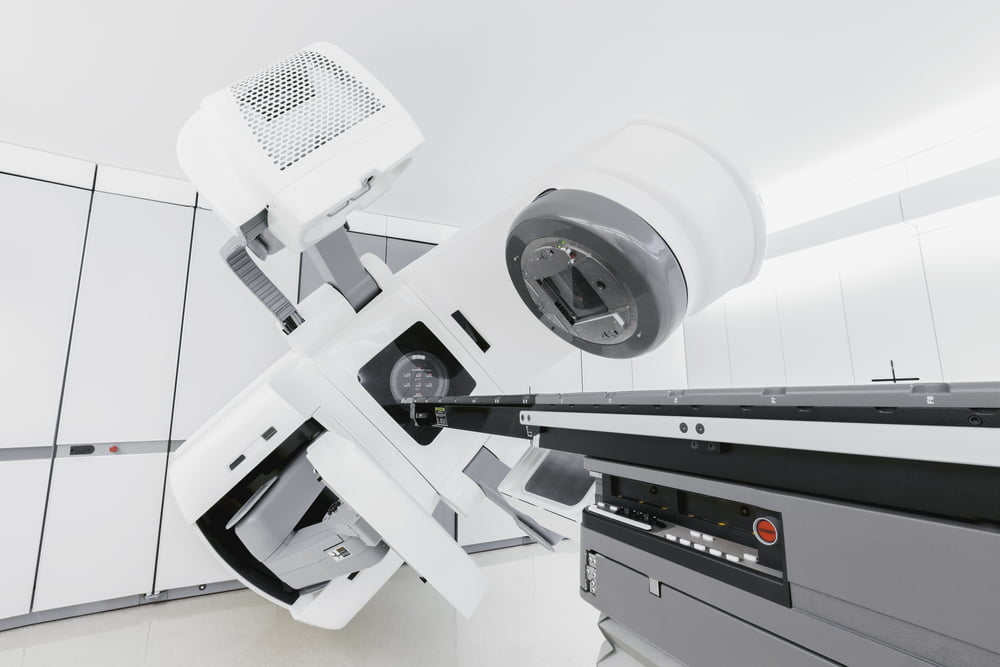Radiosurgery and its types in Türkiye
What is radiosurgery?
Radiosurgery is considered one of the most accurate applications of non-surgical radiation surgery. For this purpose, highly concentrated radiation beams of gamma and x-rays are used, in addition to protons in the treatment of cancerous tissues. It should be noted that the term “surgery” arose from the similarity of the therapeutic result between actual and radiological surgery.
How does radiosurgery work?
Radiosurgery works like other types of radiotherapy . Distortion and destruction of the DNA of cancer cells, which makes them lose their ability to multiply and grow, and thus reduce the size of the tumor over time. As for vascular diseases (such as arteriovenous malformation “AVM”), the blood vessels eventually close.

What are the types of radiosurgery?
There are 3 types of radiosurgery available, each using different techniques, equipment and radiation sources, namely:
60 Cobalt Systems:
Cobalt is used as a source of gamma rays, which uses highly focused beams of gamma rays to treat small and medium-sized lesions. Which gives an intense dose of radiation in a safe way and without moving the device. Among the therapeutic applications of these systems are:
- Small and medium lesions in and around the brain such as brain tumors or arteriovenous malformations.
- Arteriovenous malformation.
- Functional problems such as trigeminal neuralgia.
The treatment of Cobalt 60 in radiosurgery includes the following steps:
Head frame : It is a frame in the form of a box with metal rods inside to connect the frame to the skull. Its aim is to prevent the head from moving during treatment and to focus the gamma rays on the exact site of the lesion being treated.
Tumor site imaging : The exact location of the lesion to be treated is determined using CT scan or MRI.
Radiation dose: The radiotherapy team determines the optimal treatment plan based on findings using CT scans and MRI scans.
Radiotherapy: A type of helmet with a few hundred holes is placed over the head. These holes help focus the radiation beams on a target.
The treatment lasts a few minutes to a few hours, depending on the type and location of the area being treated. It should also be noted that the treatment of the lesion requires only one treatment session.
Linear Accelerator Systems (LINAC)
LINAC systems use high-energy X-rays to treat large tumors or other lesions outside the brain. Some of these systems are LINAC CyberKnife, X-Knife, Novalis, and Peacock.
LINAC systems differ from Cobalt in that the device moves around the patient during treatment, so it is able to treat large tumors and affected areas, whether in the brain or in other areas. The treatment steps here are similar to the previous ones.
Proton radiation therapy:
It is a kind of fractional beam radiosurgery device. They use particles, such as neutrons or protons, the latter being the most widely used. Proton beam therapy is useful for treating tumors or lesions that are small and/or irregularly shaped. The proton beam can be controlled to allow it to focus its energy on the tumor or lesion being treated without distraction, unlike other forms of radiation where some of its energy is lost when it enters the body’s tissues. .
It also has the advantage of minimal damage to the normal tissue surrounding the treated area because the depth of the proton beam can be precisely controlled.
Proton beam therapy can be used for radiosurgical procedures or for fractionated radiation therapy (several smaller doses of radiation over a period of time).
Treatment in Türkiye:
The medical staff of surgical teams, doctors and consultants in REHABTÜRK can provide the best treatment options and free consultations – by striving to keep abreast of the latest medical technologies and methods.
